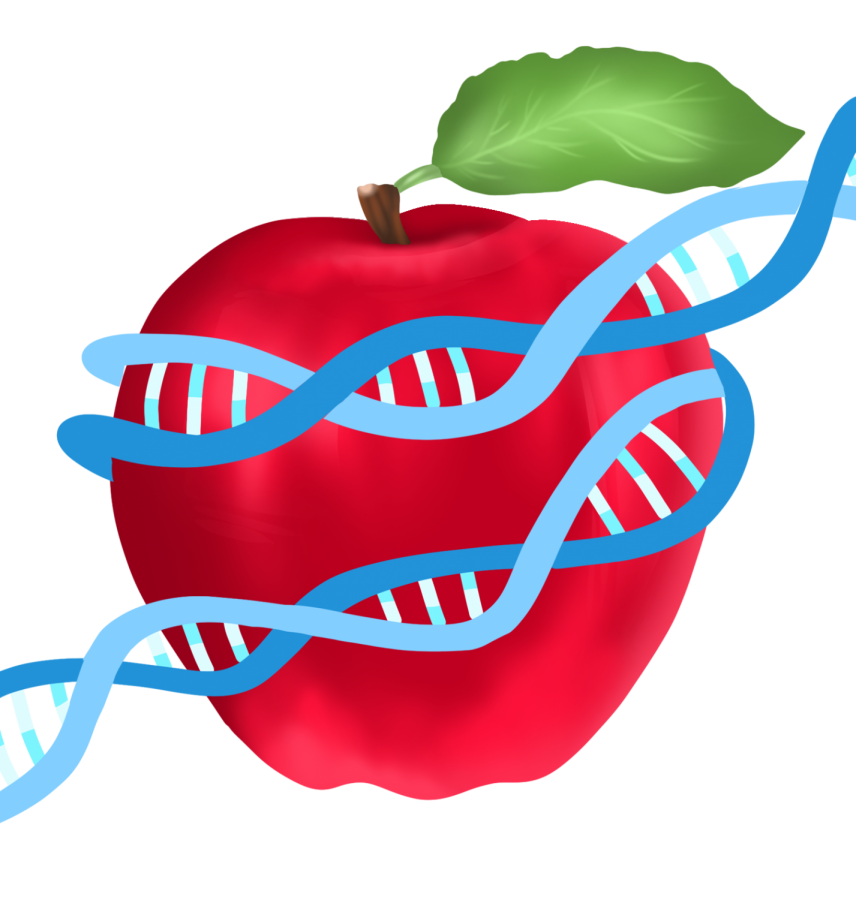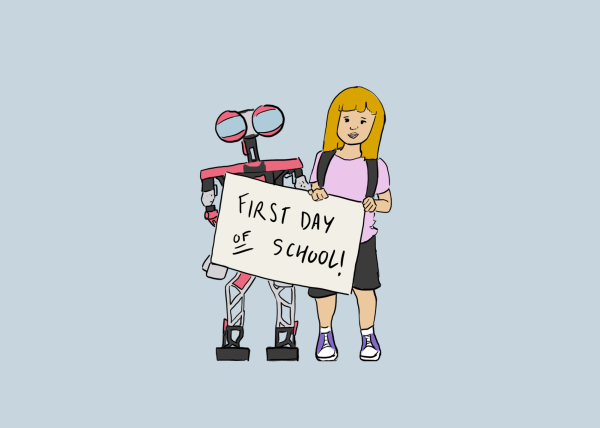GM-Ok
photo by Bethany Barker
Bioengineers have learned to genetically modify organisms in order to create a better crop with higher yields.
Rummaging through the fridge to find a snack, you find a container of Walmart-brand raspberries. Excited over the possibility of a smoothie, you open the container only to be greeted with a thin layer of mold, even though you just bought the berries two days ago. This sort of thing occurs far too often, but a solution is closer than most think.
With new innovation, comes greater agricultural developments including genetically modified organisms. GMOs have gotten a bad rap over the years, but they are more beneficial than anything.
GMOs are crops that are produced through genetic engineering, in order to improve crop yields, size, resistance, storage life and even nutrition. In 2018 genetically modified organisms have made up 94% of the soybean industry, 92% of the corn industry and 94% of the cotton industry according to the U.S. Food and Drug Administration. These building block ingredients are found in a majority of our pantries today, in items like cereals and other snacks. In addition, they are crucial to the diets of animals like cows and chickens in the agricultural field. Yet, in spite of this, GMOs still face unwarranted backlash.
Many claim that GMOs are not safe for human consumption and could have long-lasting effects on our health, but this has yet to be proven. The fact of the matter is that for decades, genetically modified ingredients have made their way to our plates without a single verified illness cited. According to Martina Newell-McGloughlin, Director of the University of California Systemwide Biotechnology Research and Education Program in 2018, within the past 30 years of testing there has not been a single health risk associated with GMO consumption. All modified food that makes it to grocery store shelves has to go through extensive testing through the U.S. Food and Drug Administration, the U.S Department of Agriculture and the Environmental Protection Agency. We should all trust that after going through intensive screening that these foods are safe to eat.
These genetic modifications are more than just a stocked shelf. Scientists have discovered ways to engineer foods to withstand severe weather restrictions, pests and unsuitable soil conditions, leading not only to a lesser need for pesticides and herbicides but a greater plant yield. This, combined with more frequent growing seasons and a higher nutritional value in some cases, could be a potential solution to the world hunger and malnutrition crisis. More food in more regions means lower food costs and higher accessibility, thereby feeding more people. Some argue that these modifications are what cause allergies among humans, but a research study conducted by Charles Xu at Harvard University shows that is not true, and in certain cases, organisms can even be altered to be hypoallergenic.
In addition, GMOs are not just beneficial to humans, but to the environment. For example, drought-resistant varieties of corn require less water and reduce the amount needed to have a successful harvest. Certain soil cultivation practices like tilling that release an abundance of carbon dioxide into the atmosphere are not required to grow some varieties of GMOs. This limits the amount of carbon dioxide released into the air through soil.
Advances like these are what make the use of GMOs so important.it only gets in the way of potential growth for human welfare across the globe. That, and, they’ll keep your raspberries from going bad after two days.
Your donation will support the student journalists of Hagerty High School. Your contribution helps us publish six issues of the BluePrint and cover our annual website hosting costs. Thank you so much!


![Its The Little Things: [CENSORED]](https://hhsblueprint.com/wp-content/uploads/2024/04/IMG_4644-600x384.jpeg)









